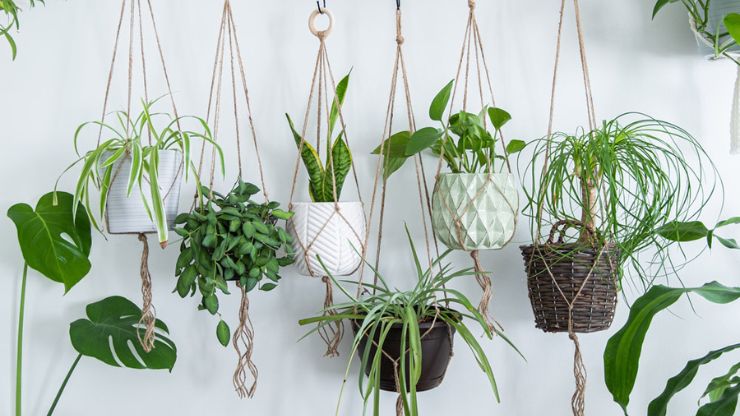The 7 Best Indoor Hanging Plants to Capitalize on Vertical Space – Transform your indoor space into a lush oasis by incorporating hanging plants that not only beautify your surroundings but also maximize vertical space. In this guide, we unveil the seven best indoor hanging plants that thrive in elevated environments, bringing life and vibrancy to any room. Whether you’re a seasoned plant enthusiast or a novice gardener, these green companions are easy to care for and add a touch of elegance to your home decor. From cascading vines to air-purifying foliage, each plant offers unique characteristics that enhance indoor environments while making the most of limited space. Join us as we explore the beauty and versatility of indoor hanging plants, and discover how you can create a stunning botanical display that elevates your living space to new heights.
Table of Contents
ToggleThe 7 Best Indoor Hanging Plants to Capitalize on Vertical Space
Pothos (Epipremnum aureum)
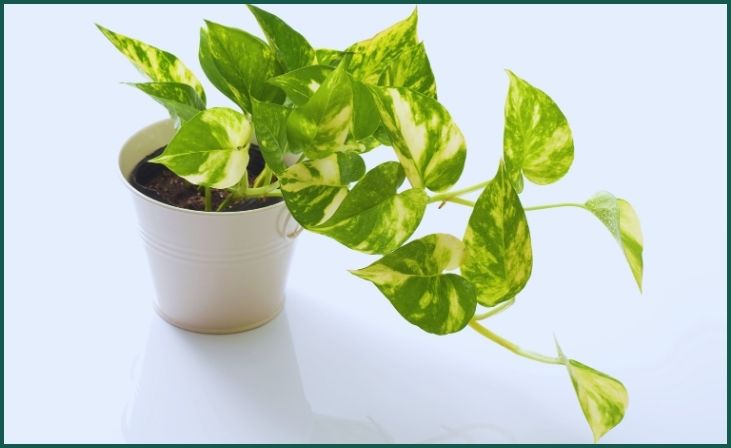
Pothos, also known as Devil’s Ivy, is a popular indoor hanging plant known for its lush, trailing vines and low maintenance requirements. This versatile plant thrives in a variety of lighting conditions, including low light, making it ideal for hanging baskets in areas with limited sunlight. Pothos plants are also known for their air-purifying properties, helping to remove toxins from indoor air and improve overall air quality. With proper care, including regular watering and occasional pruning to control its growth, Pothos can quickly fill out a hanging basket and create a beautiful cascading effect, making it a favorite choice for vertical gardening enthusiasts.
Also Read: 7 Companion Plants You Should Never Grow With Tomatoes
Spider Plant (Chlorophytum comosum)
Spider plants are another excellent choice for indoor hanging baskets, thanks to their attractive arching foliage and easy-care nature. These resilient plants are known for their air-purifying abilities and are particularly effective at removing formaldehyde and other toxins from indoor air. Spider plants prefer bright, indirect light but can tolerate lower light conditions, making them suitable for hanging in areas with limited sunlight. With their long, trailing leaves and occasional production of small white flowers, spider plants add a touch of greenery and elegance to any indoor space, making them a popular choice for vertical gardening beginners and seasoned plant enthusiasts alike.
String of Pearls (Senecio rowleyanus)
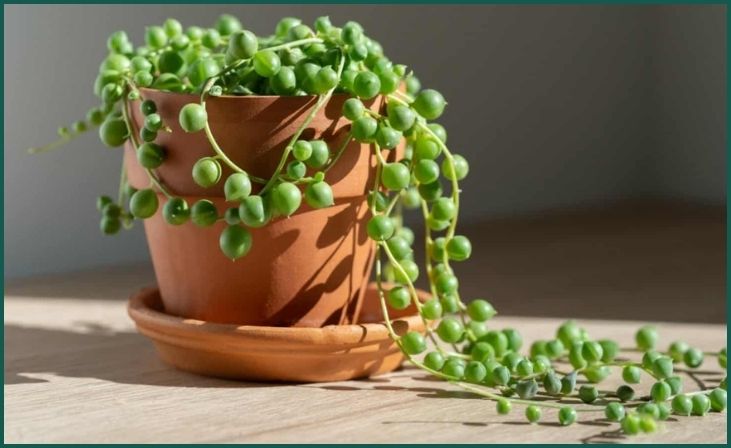
String of Pearls is a unique and eye-catching succulent that makes an excellent choice for hanging baskets. This trailing plant features long, slender stems adorned with spherical, bead-like leaves that resemble a string of pearls, hence its name. String of Pearls plants thrive in bright, indirect light and prefer well-draining soil to prevent root rot. With its distinctive appearance and trailing habit, String of Pearls adds a whimsical and decorative touch to indoor spaces, making it a popular choice for hanging in windows, on shelves, or in macramé plant hangers. With proper care, including occasional watering and bright, indirect light, String of Pearls can thrive and grow lush and full, creating a stunning vertical display.
Boston Fern (Nephrolepis exaltata)
Boston Ferns are classic indoor plants known for their feathery fronds and graceful arching habit, making them an excellent choice for hanging baskets. These lush green ferns thrive in high humidity and indirect light, making them ideal for bathrooms, kitchens, or other humid areas of the home. Boston Ferns are also effective at removing indoor air pollutants, making them a beneficial addition to any indoor space. With their elegant foliage and trailing habit, Boston Ferns create a soft and airy look when hung in hanging baskets, adding a touch of natural beauty to vertical spaces. With proper care, including regular watering and occasional misting to maintain humidity levels, Boston Ferns can thrive and grow lush and full, creating a stunning vertical display.
Don't just scroll, subscribe!
BuzzTrail's unique web-stories are the cure for boredom you've been waiting for.
English Ivy (Hedera helix)
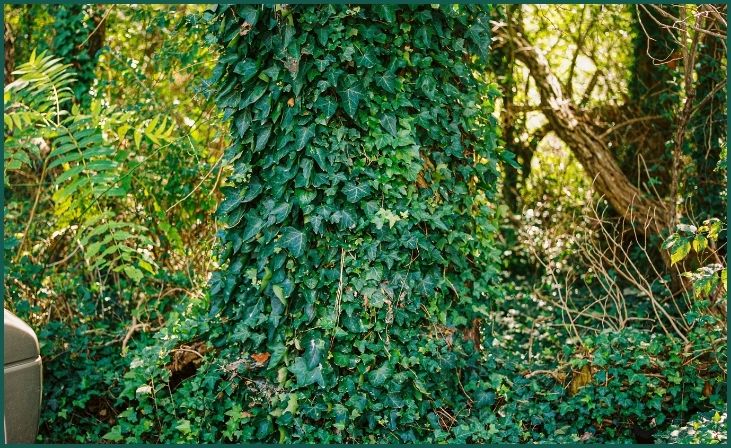
English Ivy is a classic trailing plant that is often used in hanging baskets to create a lush and verdant display. With its small, glossy leaves and vigorous growth habit, English Ivy is an excellent choice for filling out hanging baskets and adding greenery to vertical spaces. English Ivy prefers bright, indirect light but can tolerate lower light conditions, making it suitable for hanging indoors in areas with limited sunlight. This versatile plant is also known for its air-purifying properties, helping to remove toxins from indoor air and improve overall air quality. With proper care, including regular watering and occasional pruning to control its growth, English Ivy can thrive and grow lush and full, creating a beautiful cascading effect in hanging baskets.
Heartleaf Philodendron (Philodendron hederaceum)
Heartleaf Philodendron, also known as Sweetheart Plant, is a popular indoor hanging plant valued for its heart-shaped leaves and trailing vines. This low-maintenance plant thrives in a variety of lighting conditions, including low light, making it ideal for hanging in areas with limited sunlight. Heartleaf Philodendron is also known for its air-purifying properties, helping to remove toxins from indoor air and improve overall air quality. With its lush foliage and cascading habit, Heartleaf Philodendron adds a touch of greenery and elegance to any indoor space, making it a favorite choice for vertical gardening enthusiasts. With proper care, including regular watering and occasional pruning to control its growth, Heartleaf Philodendron can thrive and grow lush and full, creating a stunning vertical display.
Also Read: Plant These 8 Fantastic Leafy Greens This July
String of Bananas (Senecio radicans)
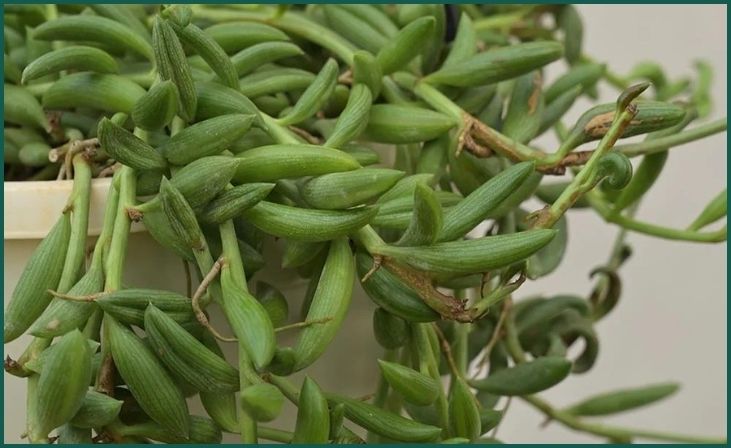
String of Bananas is a unique and visually striking succulent that makes an excellent choice for hanging baskets. This trailing plant features long, slender stems adorned with banana-shaped leaves that cascade gracefully over the edges of the container. String of Bananas plants prefer bright, indirect light and well-draining soil to prevent root rot. With its distinctive appearance and trailing habit, String of Bananas adds a whimsical and decorative touch to indoor spaces, making it a popular choice for hanging in windows, on shelves, or in macramé plant hangers. With proper care, including occasional watering and bright, indirect light, String of Bananas can thrive and grow lush and full, creating a stunning vertical display.
Conclusion
In conclusion, incorporating indoor hanging plants is a fantastic way to capitalize on vertical space while adding natural beauty and freshness to your home. From trailing vines that gracefully cascade down walls to air-purifying foliage that enhances indoor air quality, these plants offer numerous benefits beyond aesthetics. By selecting the right plants for your space and providing them with proper care and maintenance, you can create a stunning botanical display that transforms any room into a tranquil sanctuary. Embrace the versatility and charm of indoor hanging plants, and watch as they breathe new life into your living environment, enriching your home with their lush greenery and uplifting presence.
FAQs
What are some low-maintenance indoor hanging plants suitable for beginners?
What are some low-maintenance indoor hanging plants suitable for beginners?
Some low-maintenance indoor hanging plants perfect for beginners include the pothos, spider plant, and philodendron, as they require minimal watering and can tolerate various light conditions.
How can I care for indoor hanging plants to ensure they thrive in vertical spaces?
How can I care for indoor hanging plants to ensure they thrive in vertical spaces?
To care for indoor hanging plants, provide adequate sunlight based on their specific requirements, water them regularly but allow the soil to dry out between waterings, and occasionally rotate them to promote even growth. Additionally, be mindful of pests and diseases, and prune them as needed to maintain their shape and health.

